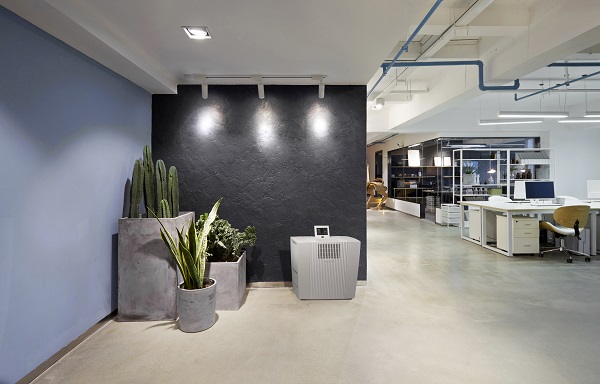Relieve health and wellness concerns attributed to Sick Building Syndrome by improving and maintaining the indoor air quality of office buildings.
For those who work in office buildings, feeling ill while at work is a common occurrence that comes with familiar symptoms including fatigue, headaches, and respiratory issues like congestion and sore throats. Many notice these symptoms subside once they leave the office, making it abundantly clear that something in the office is causing the symptoms.
This condition, being far too common across offices nationwide, has been studied and given the name Sick Building Syndrome. The EPA defines Sick Building Syndrome as:
Situations in which building occupants experience acute health and comfort effects that appear to be linked to time spent in a building, but no specific illness or cause can be identified. The complaints may be localized in a particular room or zone, or may be widespread throughout the building. In contrast, the term “building relatedillness” (BRI) is used when symptoms of diagnosable illness are identified and can be attributed directly to airborne building contaminants.
Research from the World Health Organization suggests that Sick Building Syndrome is directly linked to poor air quality found in new building construction and remodeled buildings. In an effort to be more energy-efficient, office buildings favored more airtight construction, reducing ventilation and thus becoming a major contributing factor to the ensuing health issues that employees face.
Sick Building Syndrome can have serious consequences. Many will report minor headaches that were never experienced before, or sore throats and itchy eyes, but some of the more serious symptoms that have been reported include nausea, chronic fatigue, tremors, mental fogginess, and even lung disease.

These startling health concerns are not the only pitfalls of Sick Building Syndrome. Extensive research has shown that the effects of poor office air quality can impair cognitive abilities affecting productivity and concentration. The Harvard T. H. Chan School of Public Health’s Center for Health and the Global Environment, SUNY Upstate Medical University, and Syracuse University conducted a study to research the effects of indoor air pollution on working groups:
Half the participants, including architects, engineers, designers, programmers and marketing professionals, continued their regular work for six days while some were exposed to elevated levels of volatile organic compounds and CO2. The others, the green+ participants, had lower volatile organic compound levels and enhanced ventilation. All participants completed cognitive tests at the end of each day.
The green+ participants’ cognitive function scores were twice as high on average as those of the employees in conditions with elevated levels of contaminants. When examining nine cognitive domains, researchers found the largest differences in crisis response, with scores 131 percent higher in the green+ group; the group also scored 288 percent higher in strategy and 299 percent higher in information usage.
The researchers hope their findings encourage office buildings to start prioritizing healthier building construction or to start improvements to existing structures.
Maintaining Healthy Indoor Air Quality

As we spend roughly 90 percent of our lives indoors, it should not be out of the question to make the indoor air we breathe healthier. This especially goes for places of work, where the average employee spends 40-60 hours a week indoors. There are a few ways that office buildings and employers can improve and maintain healthy air for their employees:
Ventilation Systems
There are two forms of ventilation, exhaust ventilation, and dilution ventilation.
With exhaust ventilation, airflow should draw pollutants from their source and into the exhaust, away from occupants. Dilution ventilation is the most common approach to improving indoor air quality and introduces outside air into the building in controlled quantities. Indoor air is gradually replaced by outdoor air, assuming that the indoor air is more polluted than
Office Air Purifiers
With exceptional air filtration of airborne pollutants down to 0.07 microns, the LP60 Air Purifier performs beyond HEPA standards. The LP60 features an advanced filter and optional carbon filter which can eliminate odors and gases. The LP60 is also extremely quiet, operating at 51 dBA on its highest setting.
With the Venta units, you do not have to be bothered with the maintenance concerns other humidifiers and air purifiers have, which, lets busy executives and associates focus on their work. It is Venta’s goal to relieve headaches, not create them.
By improving indoor air quality and taking careful measures to maintain healthy air, companies can focus on all the other important matters at hand. Healthy air quality is a critical component of employee productivity, engagement, and is especially healthy for a company’s bottom line.

